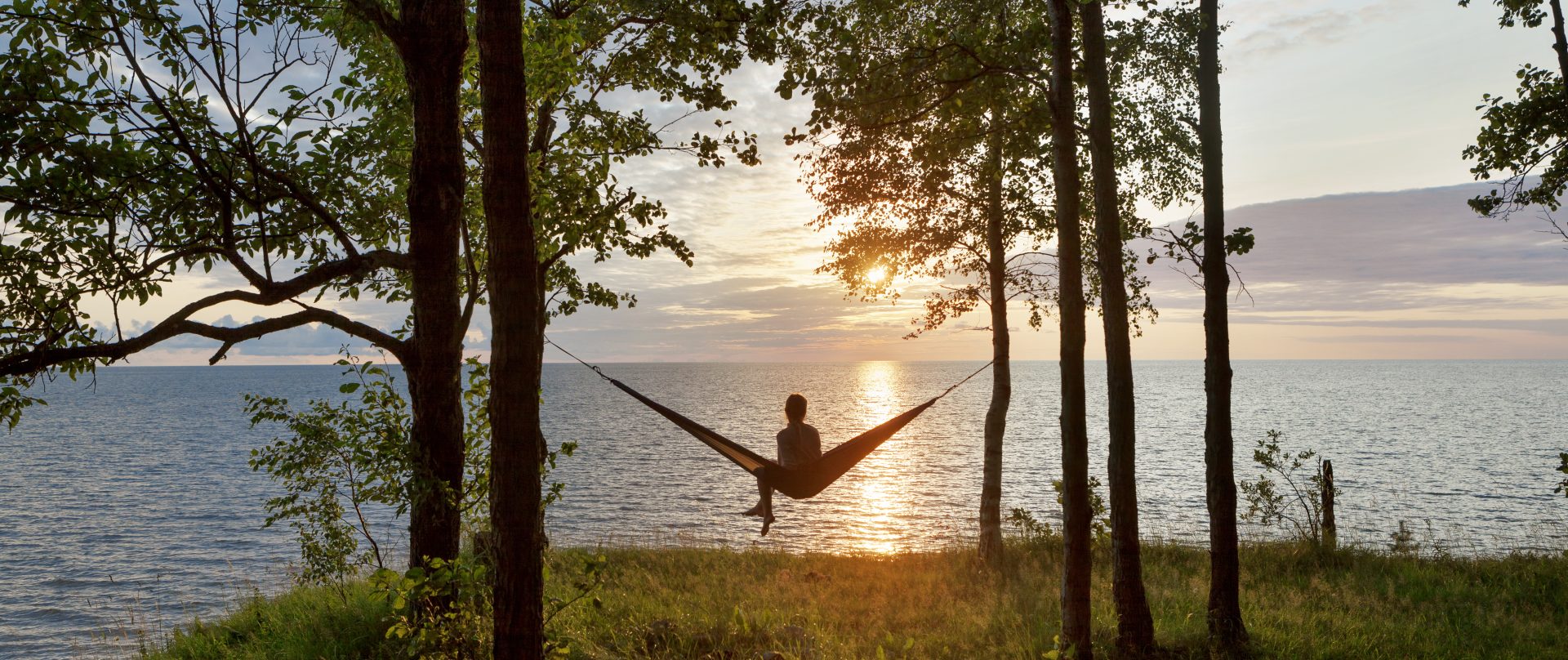Ask any Latvian about their connection to the Baltic Sea, and you’ll likely hear stories of sanctuary and solace. The Gulf of Riga and the Baltic Sea shore serve as natural retreats for locals and visitors alike. Here, people find their peace through leisurely walks, water sports, summer beach activities, and even the bracing practice of winter swimming. Let’s explore this special relationship between Latvia and its beloved coastline.
The Latvian Coastline
How does the Baltic Sea influence Latvia and its inhabitants?

© Reinis Hofmanis
Unique Environment
What makes the Baltic Sea special? This unique body of water has shaped Latvia’s coast and culture for centuries, and its story begins with its distinctive environment.
The Baltic Sea is the youngest sea on the planet, formed just 10 to 15 thousand years ago. Its origins lie in the melting of ancient glaciers and the shifting of Earth’s crust over millennia. Latvia’s seafront stretches nearly 500 kilometers, characterized by gently sloping shores and mostly soft, sandy beaches.
Thanks to the significant influx of freshwater from surrounding rivers, the Baltic Sea has an unusually low salt content. According to the World Wildlife Fund, this gives the Baltic Sea one of the most distinctive and delicate ecosystems in the world. It supports a range of vital species, including porpoises, ringed seals, cod, and salmon.
Abundance of Paths
Whether you’re looking for a casual, relaxing stroll, a weekend getaway, or a more serious hiking adventure, the Latvian coastline has you covered.
For those living in the capital, reaching the seaside is as simple as hopping on a train and getting off anywhere from Vecāķi to Zvejniekciems or from Priedaine to Vaivari in the other direction. The changing scenery, with its stretches of pine forests, is an added bonus to the journey.
For those eager to explore some of the coastline’s most remarkable landmarks, Karosta in Liepāja, Kolka Cape, and Pape Nature Park are just some of the spots well worth a visit. To truly experience life by the sea, you can also seek out the local fishing villages (zvejniekciemi) and immerse yourself in the flavors and aromas of traditional smoked fish and other specialties.
And if you’re serious about hiking, the Latvian coastal trail, Jūrtaka, is for you. It forms part of the larger Baltic Coastal Hiking Route, which begins at the Lithuanian-Russian border, winds through Latvia, and ends in Tallinn, Estonia. Each stretch of Jūrtaka reveals a new side of the coastline, making it an unforgettable journey.
Economic Significance
Living by the Baltic Sea and the Gulf of Riga isn’t just about scenic views – the sea plays a vital role in Latvia’s economy, shaping industries like cargo transport, fishing, and coastal tourism.
Latvian ports are key hubs in international trade, connecting the country to global supply chains. The three largest ports – Riga, Ventspils, and Liepāja – handle the majority of Latvia’s cargo turnover. Meanwhile, smaller ports like Skulte, Mērsrags, and Salacgrīva contribute to local economies through fishing and marina services.
Fishing remains essential to coastal communities, with cod, sprat, and herring as the primary catches. Sprats in oil (šprotes eļļā) are a standout product, sometimes even referred to as the “Latvian gold”. These tiny fish have been central to our food culture and economy for over a century. Other cherished delicacies include pickled herring, smoked flounder, bream, and salmon.
The Latvian coastline is also a major tourist destination, drawing visitors from across the region. Coastal tourism creates more local jobs than any other maritime industry in Latvia. During summer months, the coast comes alive with popular events – from music festivals like “Positivus” and “Summer Sound” to traditional fisherman’s festivals across the coast. Each of these events attracts thousands of visitors, making tourism a vital part of Latvia’s coastal story.



